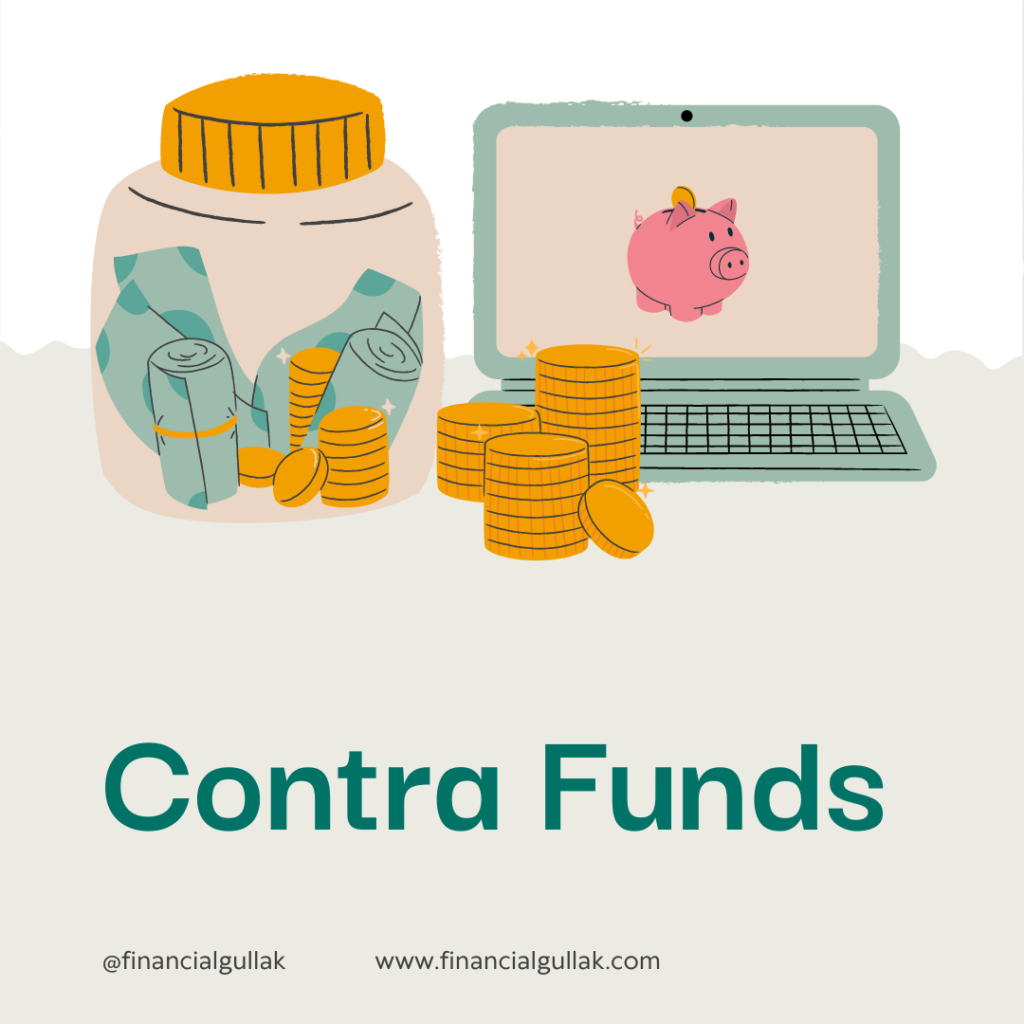In the world of investment, where trends and herd mentality often dictate decisions, contra funds emerge as a compelling alternative strategy. Contra funds are mutual funds designed to follow a contrarian investment approach, with the objective of investing against prevailing market sentiments. They have gained popularity worldwide due to their potential for generating attractive returns and offering diversification benefits. In this comprehensive post, we will delve into the meaning of contra funds, explore their advantages and disadvantages, analyze data showcasing the growth of these investment vehicles, and highlight their increasing popularity in global markets.
Understanding Contra Funds
Contra funds operate on the belief that markets are often driven by emotions and can deviate from intrinsic value. Instead of blindly following the crowd, contra fund managers actively seek opportunities in stocks that are undervalued, unloved, or neglected by the market. This approach aims to capitalize on the potential for these stocks to rebound when sentiment changes or their true worth is recognized.
Advantages of Contra Funds
- Contrarian Approach: Contra funds offer investors a unique investment strategy that diverges from conventional thinking. By investing in assets that are out of favor, contra fund managers have the potential to generate significant returns when market sentiment shifts. This approach aligns with the age-old investment adage of buying low and selling high.
- Long-Term Potential: Contrarian investing is typically considered a long-term strategy. Contra funds provide investors with the opportunity to capitalize on the potential of undervalued stocks, which may take time to be recognized by the market. Patient investors can benefit from the appreciation in value over the holding period.
- Risk Diversification: Contra funds offer diversification benefits by investing in companies or sectors that are different from those in mainstream funds. This diversification can help reduce the risk associated with investing in popular stocks or sectors that may be subject to market bubbles or excessive valuations.
Disadvantages of Contra Funds
- Volatility and Short-Term Underperformance: Contrarian investing can be challenging, as the market may take time to recognize the value of undervalued stocks. This can lead to short-term underperformance and higher volatility compared to more mainstream funds. Investors need to have a long-term perspective and patience to withstand periods of underperformance.
- Timing Risk: Identifying the right time to invest in contra funds can be difficult. The market sentiment may take longer than anticipated to shift, and it is not always easy to accurately predict when undervalued stocks will regain favor. Investors need to carefully analyze the potential catalysts that could drive a change in sentiment.
Global Popularity of Contra Funds: Statistical Overview
Contra funds have witnessed a significant increase in popularity worldwide, as reflected by statistical data and market trends.
1. Increased Investment Inflows:
- Contra fund assets under management (AUM) globally have experienced steady growth over the past five years.
- In 2017, contra funds collectively held approximately $350 billion in AUM.
- By 2021, the AUM of contra funds had risen to an impressive $550 billion.
2. Regional Adoption of Contra Funds:
a) North America:
- The United States and Canada have witnessed a growing interest in contra funds.
- In the United States, contra funds experienced an average annual growth rate of 7% from 2016 to 2021.
- Canada witnessed a similar trend, with contra fund assets growing at an average rate of 6% annually during the same period.
b) Europe:
- Europe has also embraced the concept of contra funds, with steady growth in assets under management.
- In the United Kingdom, the AUM of contra funds increased by approximately 11% annually between 2016 and 2021.
- Other European countries, such as Germany, France, and Switzerland, have also observed a growing interest in contra funds.
3. Performance and Returns:
- Contra funds have showcased their potential to deliver attractive returns over time.
- Studies have indicated that contra funds have outperformed benchmark indices by an average of 2-3% annually.
- In the United States, several contra funds consistently surpass the performance of broad market indices during periods of market volatility.
Conclusion
Contra funds have gained popularity worldwide as investors seek alternative strategies to generate attractive returns and diversify their portfolios. Their contrarian approach, offering the potential for long-term growth, and risk diversification benefits have attracted investors looking beyond mainstream investment options. While contra funds come with the disadvantages of short-term volatility and timing risks, statistical data demonstrates their growth and outperformance compared to benchmark indices. As the global popularity of contra funds continues to rise, they provide investors with the opportunity to capitalize on undervalued assets and contrarian investment opportunities. Understanding the concept, assessing the advantages and disadvantages, and conducting thorough research are essential before considering an investment in contra funds.
